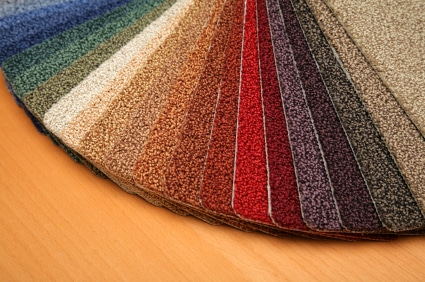Understanding your carpet layer
Carpet speak: an A-Z guide.

Carpet speak – an A-Z guide.
You’re enquiring about getting some new carpet laid but your carpet layer‘s careful explanations sound like a bunch of mumbo jumbo? Don’t worry, you’re not alone. “Carpet speak” is full of industry-specific terms and phrases. Our A-Z guide helps take the confusion out of this foreign “language”.
Binding:
A strip sewn over a carpet edge for protection against unravelling.
rushing:
The irreparable loss of pile height caused by traffic or weight.
Cut Pile:
The face of a carpet where the surface is composed of cut ends of fibres.
Denier:
The amount of yarn per area of carpet.
Density:
Refers to the amount of pile yarn per area of carpet or the closeness of the tufts. Higher density carpet improves resistance to crushing and matting.
Double- glued seams:
These seams attach carpet to bare floor to prevent edge ravel. Carpet layers should double-glue seams to prevent fuzzing.
Fibre
: This is the fundamental unit of carpet. Carpet fibres are made from nylon, polyester, cotton, acrylics, wool, and recycled material.
Flocked:
Flocked carpet is made of tufts of wool or cotton fibre.
Fuzzing:
This occurs when fluffy particles appear on carpet surfaces. It is caused by fibres that loosen because of weak twist or snags. Carpet layers and carpet cleaners can shear the carpet to remove fuzzing.
Hand:
The texture and relative softness of the pile.
Heatsetting:
The process of heating or steaming yarns to hold their twist. Most nylon, olefin and polyester cut pile carpets are heatset.
Knitted:
Knitted carpet is formed by interlacing yarn in a series of connected loops.
Matting:
The usually irreversible adhesion of carpet yarn caused by traffic or dirt.
Needle Punched:
This type of carpet is stitched into backing material.
Pile:
A column of carpet fibre
Pile Direction:
The direction the pile lays flattest when rubbing your hand back and forth along the length of the material.
Piling:
Occurs when fluffy particles appear on carpet surfaces. It is caused by fibres that loosen because of weak twist or snags. Usually, you can simply cut the pills with sharp scissors. If the pills are large, however, call in a professional carpet layer to resolve the problem.
Pile Reversal:
Also known as shading. Traffic bends the carpet fibre in different directions creating an impression of light and dark areas. Regular vacuuming can create uniform shades.
Rippling:
Heat and humidity can cause ruffles or waves in carpet. A professional carpet layer can re-stretch the carpet with a power stretcher.
Shading:
See Pile Reversal.
Shedding:
New carpet tends to shed for a few weeks after installation. Regular vacuuming can resolve this problem. Shedding is more common in cut pile carpet and in wool carpet. Synthetic fibre carpet (such as nylon) does not shed as much.
Snags:
Can occur when an object tangles in carpet. Usually, you can simply cut the snag with sharp scissors. If the snag is large, however, you can call a carpet layer to resolve the problem.
Soling:
Soiling occurs when dirt particles build up in carpet fibres. Regular vacuuming and cleaning will prevent this problem.
Texture Retention:
Texture retention or carpet memory is the ability of tufts to retain their shape under traffic.
Tufted:
Tufted carpets are pieces of yarn embedded in backing material.
Twist:
Twist is the winding of yarn around itself.
Woven:
Woven carpet is the interlacing of fibre and yarn strands.
Yarn:
Made of fibres that are twisted together to form a continuous strand.
Yarn Count:
Reflects the amount of yarn packed into a given area.